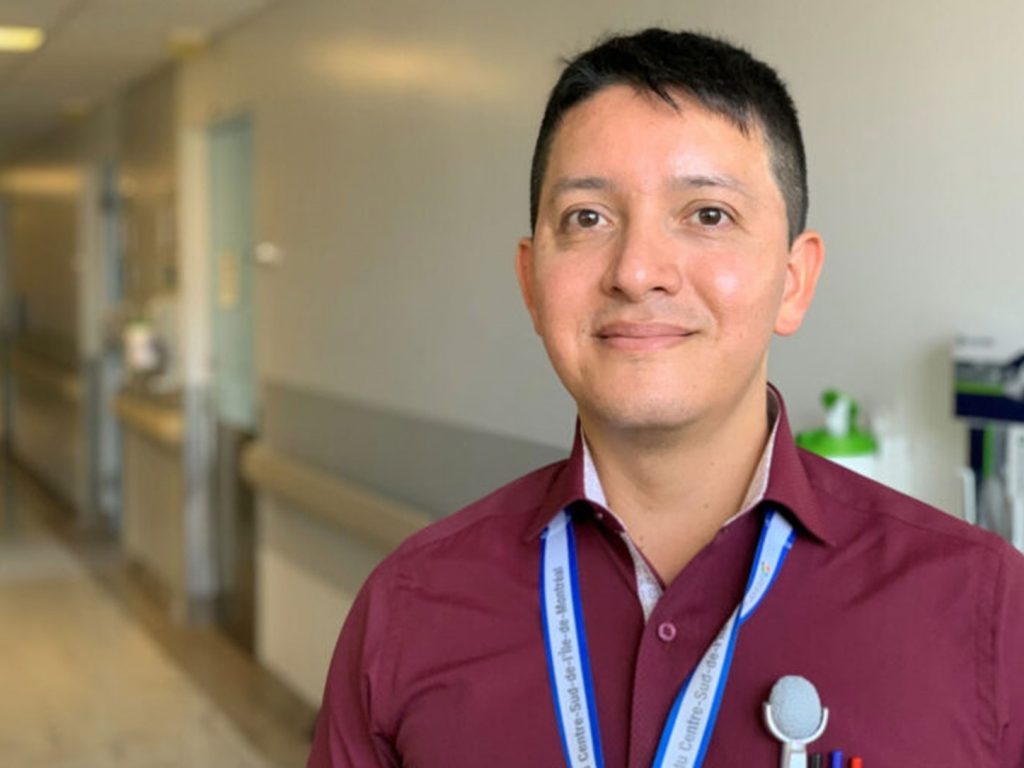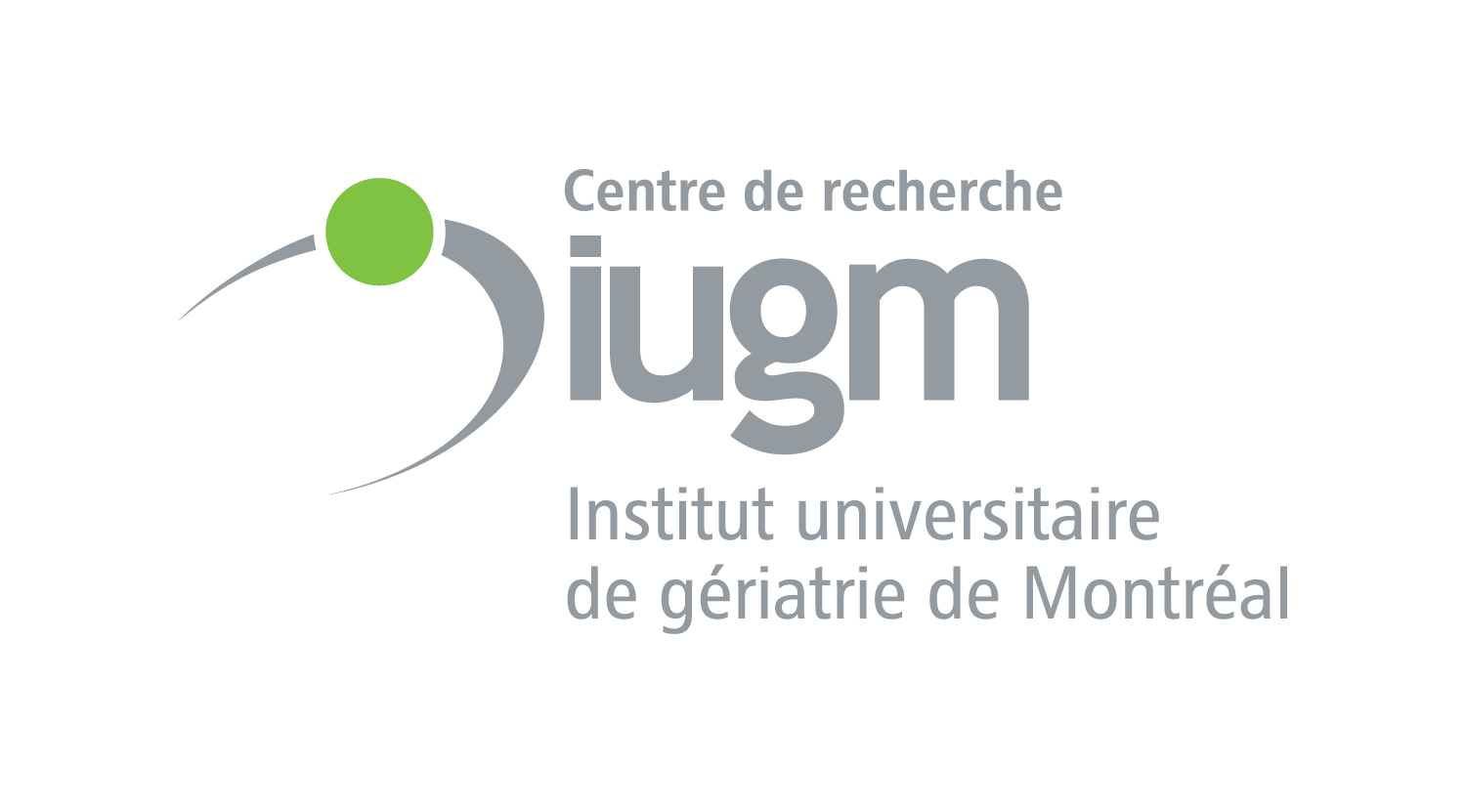
Dr. Alexander Moreno, Associate Clinical Researcher at CRIUGM, coordinated a study aimed at identifying evidence-based technologies to support people living with dementia and their family caregivers. The results of this study have been published in Gerontechnology, an international scientific journal dedicated to this field.
In recent decades, population aging has been accompanied by a significant increase in cases of Alzheimer’s disease and other forms of dementia. This demographic shift raises major challenges not only for healthcare systems but also for families, faced with rising costs for care required by these neurodegenerative diseases. In this context, emerging technologies represent a promising avenue. They can both promote home support for people with neurocognitive disorders and relieve the emotional and organizational burdens experienced by family caregivers. What are the most effective technological tools for supporting people living with dementia and their family caregivers? This is the question Dr. Alexander Moreno, also an Associate Professor in the Department of Psychology at the Université de Montréal, sought to answer by coordinating a systematic review of the scientific literature published over the past decade.
To conduct this study, he has collaborated with Dr. Carlos Cifuentes, Dr. Marcela Munera, Dr. Gloria M. Gutman, and his research team from the INTECOG laboratory* (Innovation, Technology, and Cognition). The analysis identified 17 types of gerontechnologies, covering a wide range of functions: a) behavioral monitoring, b) health monitoring, c) caregiver education, d) communication, e) tracking devices, and f) reminders, emergency warnings, and solutions for social isolation and daily activities support.

The study results highlight the positive effects of these technologies on both the quality of life of older adults and their family caregivers. Families report tangible relief from their caregiving tasks, and increased peace of mind thanks to remote monitoring, prevention of risky situations, and the maintenance of social interactions. Some technological solutions also offer cognitive or emotional stimulation functions, helping to slow symptom progression or improve the well-being of dyads formed by people living with dementia and their family caregivers.
Towards an integrated model for designing gerontechnologies
Beyond the analysis of existing devices, this study proposes an innovative conceptual model to guide clinicians and engineers in designing and integrating these technologies along the continuum from normal aging to neurocognitive disorders. This framework aims to better align user needs with the functionalities offered by gerontechnologies and determine the most opportune moment for integrating them into support and care pathways. It also encourages a transdisciplinary approach, based on collaboration between health professionals, researchers in gerontology and geriatrics, technology designers, and families.
Finally, this review includes several key recommendations to improve the design and deployment of these technologies. It highlights the need to actively involve end users in the design process, ensure the accessibility and ease of use of tools, and ensure the ethics of their deployment. It also emphasizes the need for ongoing evaluative research to assess the real-world effectiveness of technologies in a variety of living contexts. Together, these elements outline a future where technological innovations fully contribute to the dignity, autonomy, and well-being of people living with dementia, as well as their loved ones.
Alexander Moreno PhDa,b,c, Henrick Durce BSa,b, Carlos Cifuentes PhDd, Marcela Munera PhDd, Kelly Acevedo-Beniteza,b, Célia Couve BSa,b, Maria-Cristina Scola BSb,e, Gloria M. Gutman PhDf
aDépartement dePsychologie, Université de Montréal, Montréal, Québec, Canada; bCentre de recherche de l’institut universitaire de gériatrie de Montréal; Laboratoire Innovation, Technologie, et Cognition (INTECOG), CIUSSS du Centre-Sud-de-l’Île-de-Montréal, Montréal, Québec, Canada; cHôpital Notre-Dame, Centre intégré universitaire de santé et de services sociaux du Centre-Sud-de-l’Île-de-Montréal (CCSMTL), Montréal, Québec, Canada; dBristol Robotics Laboratory, University of the West of England, Bristol, UK; eDépartement de Psychoéducation, Université de Montréal, Montréal, Québec, Canada; fGerontology Research Centre, Simon Fraser University, Vancouver, British Columbia, Canada.
*INTECOG laboratory team headed by Dr Alexander Moreno

Henrick Durce
Department of Psychology, Université de Montréal, Montréal, QC, Canada; Centre de Recherche de l’Institut Universitaire de Gériatrie de Montréal, CIUSSS du Centre-Sud-de-l’Île-de-Montréal, Montréal, QC, Canada

Kelly Acevedo
Department of Psychology, Université de Montréal, Montréal, QC, Canada, Centre de Recherche de l’Institut Universitaire de Gériatrie de Montréal, CIUSSS du Centre-Sud-de-l’Île-de-Montréal, Montréal, QC, Canada

Célia Couve
Department of Psychology, Université de Montréal, Montréal, QC, Canada ; Centre de Recherche de l’Institut Universitaire de Gériatrie de Montréal, CIUSSS du Centre-Sud-de-l’Île-de-Montréal, Montréal, QC, Canada

Maria-Cristina Scola :
Department of Psychoeducation, Université de Montréal, Montréal, QC, Canada; Centre de Recherche de l’Institut Universitaire de Gériatrie de Montréal, CIUSSS du Centre-Sud-de-l’Île-de-Montréal, Montréal, QC, Canada

